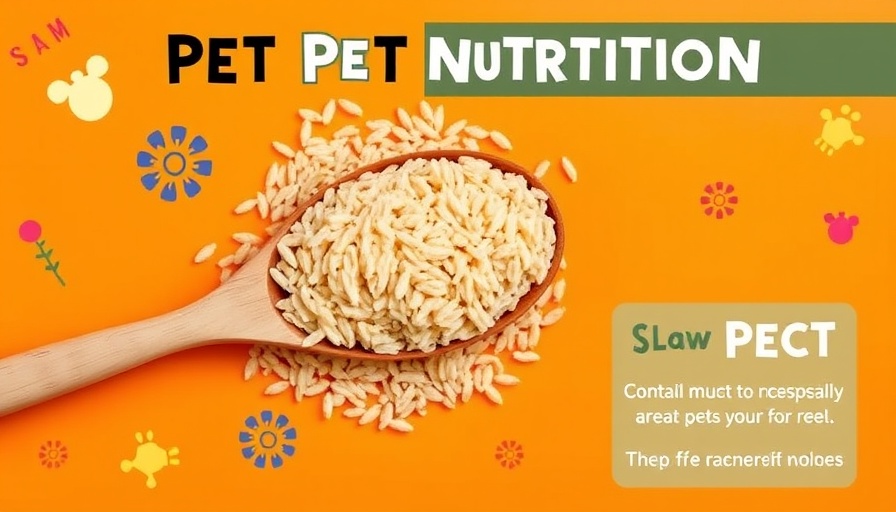
Uncovering the Benefits of Brown Rice for Pets
As pet owners, we often strive to provide the best for our furry companions, from food choices to health and exercise. One grain that has gained popularity for human diets is brown rice, and many of us wonder if it’s suitable for our dogs and cats. Unlike white rice, brown rice is less processed, retaining essential nutrients that could potentially benefit our pets’ health.
What Makes Brown Rice a Nutritional Powerhouse?
Brown rice is classified as a whole grain, meaning it contains all three parts of the kernel: the bran, germ, and endosperm. This structure contributes a wealth of nutrients, including vital B vitamins, minerals like iron and magnesium, and dietary fiber. The bran is rich in phytochemicals such as y-oryzanol, which has shown promising results in animal studies for combating metabolic syndrome—a concern that affects both pets and humans.
Brown Rice vs. White Rice: A Nutritional Showdown
Many pet owners may wonder why brown rice is often touted as the healthier option. The process of milling brown rice to produce white rice strips away these nutrients, leaving behind a calorie-dense product that lacks the health benefits of its brown counterpart. According to a study published in the Journal of Ethnic Foods, this milling process results in a significant loss of essential nutrients, including up to 90% of vitamin B6 and most dietary fiber.
Can Your Pets Eat Brown Rice?
The good news is that brown rice is not toxic for pets. While it can serve as a supplement to their diet, pet owners should be cautious. Brown rice should never replace high-quality protein sources in your pet’s diet—these are crucial for their health and well-being. Therefore, adding brown rice can be beneficial, especially in cases where pets require low-fat diets or need extra fiber. Pet owners should always consult with a veterinarian before making dietary changes.
Potential Health Benefits for Dogs and Cats
There are multiple ways in which brown rice can support your pets’ health. Its high fiber content can aid digestion, and the antioxidants present may help combat oxidative stress. Additionally, B vitamins are essential for energy production and overall health. Some pet owners have reported improvements in their pets’ coat condition and energy levels after incorporating brown rice into their diets.
How to Add Brown Rice to Your Pet's Diet
If you’re considering making brown rice a part of your pet’s meals, introducing it gradually is crucial. Start with small portions mixed in with their regular food to gauge their tolerance. Always ensure the rice is thoroughly cooked and served plain, without any added spices or ingredients that could be harmful.
Common Misconceptions About Brown Rice
Many pet owners may worry that grains, including brown rice, are harmful to pets due to concerns about allergies or sensitivities. While some pets may show intolerances, this is not the case for all animals. Understanding your pet’s unique dietary needs is key in making informed decisions about their food.
Considerations and Recommendations
Before introducing brown rice or any new food into your pet's diet, it's best to discuss with a veterinarian. They can help assess any potential dietary impacts on your pet's health and determine the appropriate serving size based on their age, weight, and medical history. Always prioritize fresh, high-quality foods that align with your pet’s natural dietary needs.
Final Thoughts: Nurturing Your Pets with Care
In conclusion, while brown rice offers valuable nutrients, it’s important to remember it must be part of a balanced diet tailored to your pet's needs. Whether for dogs or cats, understanding how nutritional choices influence wellness can lead to happier, healthier pets. If you’re ready to make a change, seek your veterinarian's guidance for optimal pet care.
 Add Row
Add Row  Add
Add 




 Add Row
Add Row 


 Add
Add
Write A Comment